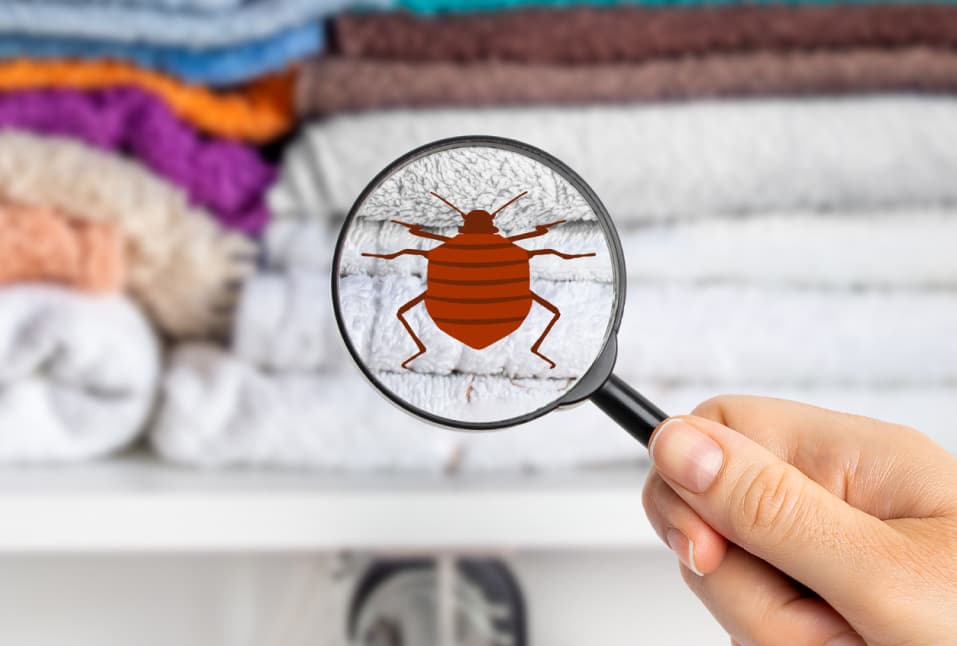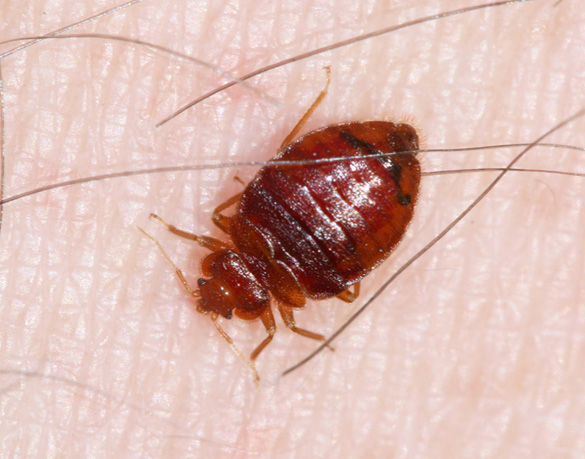Get Educated About the Kinds Of Bug Control Approaches and Their Advantages for Home Owners
Understanding the numerous insect control approaches offered to property owners is essential for reliable bug management. Home owners who are educated can make tactical selections that not only address insect problems however also boost the overall top quality of their living environment.
Chemical Bug Control Methods
Chemical bug control methods are a crucial part of integrated bug management methods for home owners seeking reliable solutions to pest infestations. These techniques involve the application of chemical materials designed to remove or discourage pests that endanger personal effects, health, and comfort. Typical chemicals made use of include pesticides, herbicides, fungicides, and rodenticides, each tailored to target certain bugs.
The key advantage of chemical pest control is its rapid efficiency; several formulations provide immediate results, minimizing pest populaces dramatically in a brief time. In addition, advances in chemical formulas have actually caused items that are a lot more eco pleasant and have reduced poisoning levels for non-target microorganisms when used appropriately.

Biological Bug Control Methods
All-natural insect control approaches have acquired prestige as property owners look for more secure and much more lasting choices to conventional chemical techniques. Organic pest control methods make use of all-natural predators, parasites, or microorganisms to handle parasite populations properly. This method is not only eco-friendly yet also reduces the danger of injury to non-target species, including helpful pests and wildlife.
One of the most common biological control techniques includes introducing all-natural killers right into the setting. For instance, ladybugs can be made use of to control aphid populations, while nematodes target soil-dwelling pests like grubs. Furthermore, parasitoids-- microorganisms that reside on or within a host-- can be utilized to manage certain bug types by laying eggs inside them, eventually causing their death.
An additional approach is using biopesticides, which are stemmed from all-natural products such as minerals, plants, or bacteria (bed bug exterminator). These items can properly target parasites while posturing marginal risk to humans and animals. On the whole, organic bug control methods offer property owners with an efficient means of parasite monitoring that lines up with ecological concepts, promoting a healthier living setting while minimizing reliance on artificial chemicals
Mechanical Parasite Control Techniques
Mechanical pest control approaches include a variety of approaches that physically prevent or remove insects without the use of chemicals. These techniques are specifically valuable for house owners seeking eco-friendly alternatives while guaranteeing the safety and security of their space.
One typical method is the usage of barriers, such as displays, traps, and webs, which avoid parasites from entering homes or particular areas. For example, mounting window screens can properly keep pests out, while using physical barriers around gardens can hinder larger bugs like deer or rabbits. In addition, mechanical traps developed for rodents can catch and get rid of these pests without the need my website for hazardous materials.
An additional effective technique includes the usage of vacuum cleaners and mops to eliminate parasites straight from surface areas. Regular cleaning how to control pests in your home and maintenance can substantially lower pest populations by getting rid of food sources and hiding areas. In addition, using tools like ultrasonic bug repellents can hinder numerous parasites via acoustic wave that are unpleasant to them but inaudible to humans.
Social Bug Control Practices
Social insect control methods focus on customizing the environment and management methods to produce conditions that are less conducive to pest problems. These techniques are essential in preserving a balanced community and minimizing the reliance on chemical treatments. By modifying agricultural practices, homeowners can properly prevent insects while promoting plant wellness.
One typical method includes plant rotation, which disrupts the life process of insects by changing the kinds of plants grown in a specific location (bed bug exterminator). This not only minimizes pest populaces however additionally enhances soil wellness. Furthermore, intercropping-- planting varied crops in distance-- can perplex insects and reduce their capability to locate their recommended host plants
Water administration is an additional important aspect of social practices. Appropriate irrigation strategies can avoid standing water, which works as a breeding ground for insects and other bugs. Keeping cleanliness in and around the home, such as frequently eliminating particles and food waste, can substantially decrease pest attraction.
Including these cultural practices into a thorough pest administration approach permits property owners to produce a setting that normally deters insects, consequently boosting the performance of various other control methods while promoting lasting horticulture and landscape design.

Integrated Bug Management Approaches
Integrated Parasite Monitoring (IPM) represents a holistic approach that incorporates different techniques to efficiently manage parasite populaces while reducing environmental effect. This technique incorporates organic, cultural, physical, and chemical techniques to attain sustainable pest control. By analyzing pest populations and their natural opponents, IPM stresses tracking and identifying pests look at these guys prior to executing control measures.
Among the core principles of IPM is the use of limits, which establish the degree of bug activity that necessitates intervention. This makes certain that treatments are used only when essential, minimizing the dependence on chemical pesticides. Biological control approaches, such as presenting natural killers or bloodsuckers, operate in combination with cultural techniques like crop turning and environment control to interfere with pest life cycles.
In addition, IPM encourages using least-toxic chemical options when intervention is essential, prioritizing items that pose very little threat to non-target organisms and the atmosphere. For homeowners, embracing IPM comes close to not only improves the efficiency of insect administration yet also advertises a much healthier living environment, promoting biodiversity and decreasing chemical direct exposure. Inevitably, IPM empowers house owners to make enlightened decisions that balance insect control with eco-friendly duty.
Final Thought
In conclusion, understanding the different pest control approaches equips property owners to make enlightened choices relating to pest management. Each strategy-- chemical, biological, mechanical, social, and integrated parasite administration-- offers unique benefits that provide to various requirements and choices.
Comprehending the various bug control methods offered to homeowners is crucial for effective parasite management.Chemical pest control methods are a critical element of incorporated insect monitoring strategies for house owners looking for effective options to pest infestations. In general, organic pest control techniques offer house owners with a reliable means of bug monitoring that aligns with environmental concepts, advertising a much healthier living environment while minimizing dependence on artificial chemicals.
Social pest control practices focus on customizing the setting and monitoring techniques to create conditions that are much less favorable to pest infestations.In verdict, recognizing the numerous pest control approaches encourages homeowners to make informed choices relating to pest management.